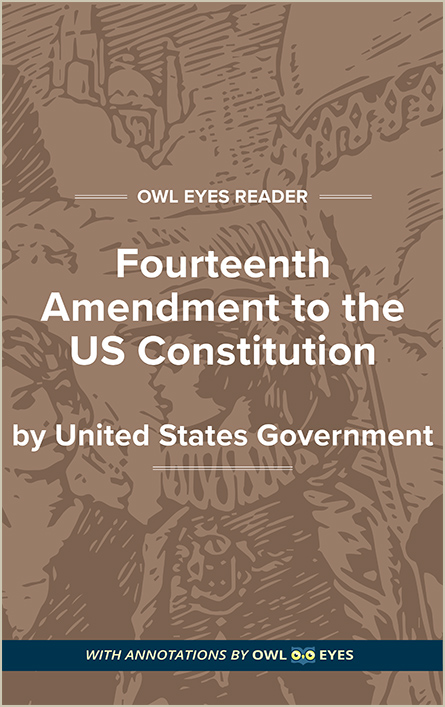Analysis Pages
Historical Context in Fourteenth Amendment to the US Constitution
American Slavery: In American history, the institution of slavery predates the founding of the nation. Starting in the 17th century, slaves were brought to the American colonies and the labor they provided came to form a pillar of the economy. This was particularly true in the Southern states, where cotton became the largest industry and export of the 19th century. Because the Northern states had begun to eliminate slavery in the 1770s, tensions between the North and South increased over the course of the nation’s first century. In the 1850s, debates erupted over the place of slavery in the newly annexed western states. The Supreme Court issued a landmark decision in the case of Dred Scott, a slave who moved with his master to the slave-free state of Illinois. The decision was that slaves remained enslaved, even after relocating to a free state. As the 1850s elapsed, it became clear that, in the words of Abraham Lincoln, “this government cannot endure permanently half-slave and half-free.”
The Civil War and Reconstruction: The tension between the American North and South, between abolitionists and slave-owners, erupted in 1861. Shortly after the election of Abraham Lincoln, the Southern states, one by one, began to secede from the Union. In March 1861, the Union and the newly organized Confederacy clashed at Fort Sumter, initiating the Civil War. The war would continue for four years, cycling through periods of both intense conflict and anxious waiting, and would absorb all of Lincoln’s attention during his four years as president. With twice as many troops and a more robust economy, the North won a decisive, though costly, victory in the war. As victor, the North had the opportunity to rebuild the nation according to its own vision. As the era of Reconstruction began, Northern lawmakers sought to bring about the progressive changes they desired. Despite the retrogressive actions of President Andrew Johnson and the attempts of the Southern states to keep African Americans subordinated, the North succeeded in laying the groundwork for change. The legislative legacy of Reconstruction includes three powerful Constitutional Amendments: the Thirteenth, Fourteenth, and Fifteenth Amendments. Altogether, these laws greatly expanded the liberties of African Americans, freeing them from slavery, offering them full citizenship, and granting them the right to vote.
Historical Context Examples in Fourteenth Amendment to the US Constitution:
Text of the Amendment
🔒"the public debt of the United States..." See in text (Text of the Amendment)
"Section 3...." See in text (Text of the Amendment)
"excluding Indians not taxed..." See in text (Text of the Amendment)
"Representatives shall be apportioned among the several States according to their respective numbers..." See in text (Text of the Amendment)
"life, liberty, or property..." See in text (Text of the Amendment)
"No State shall make or enforce any law..." See in text (Text of the Amendment)
"The Congress shall have power to enforce..." See in text (Text of the Amendment)
"the male inhabitants of such State..." See in text (Text of the Amendment)
"except for participation in rebellion, or other crime..." See in text (Text of the Amendment)
"being twenty-one years of age..." See in text (Text of the Amendment)
"Ratified by the required three-fourths of states on 9 July 1868 ..." See in text (Text of the Amendment)

